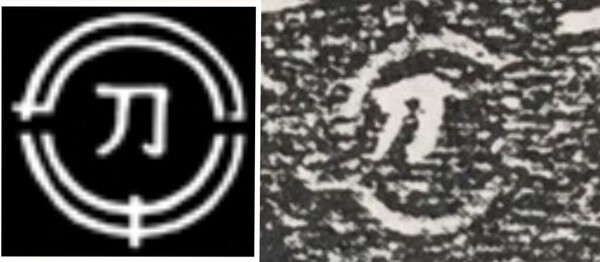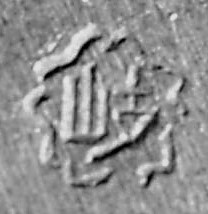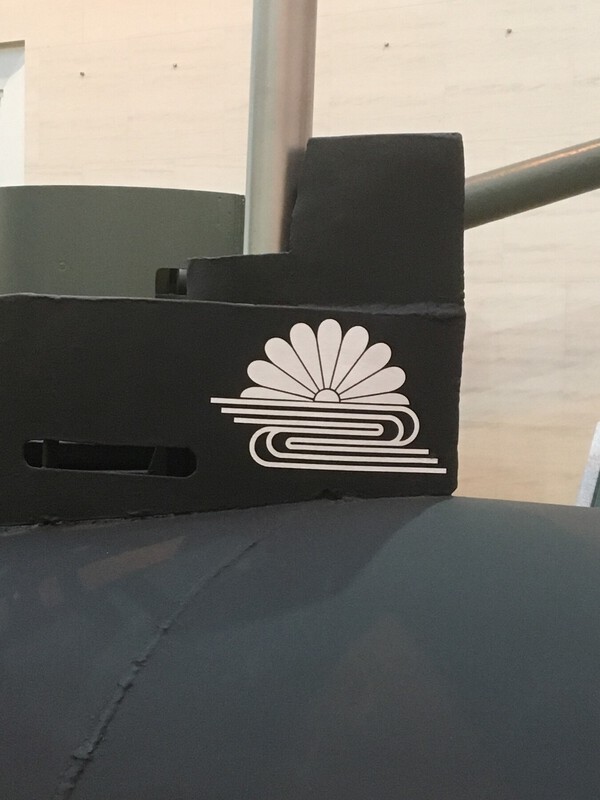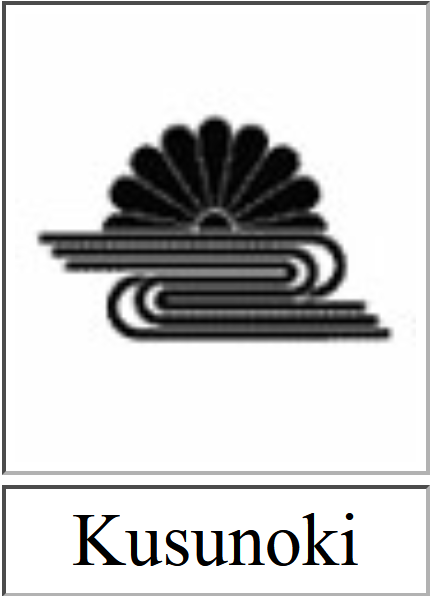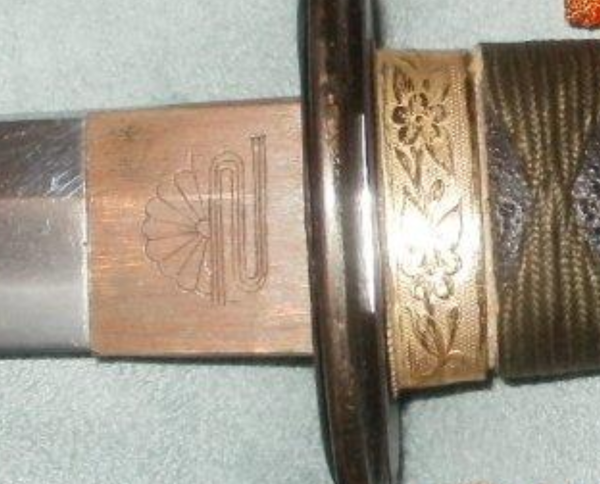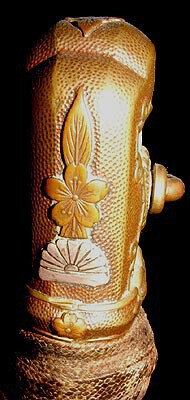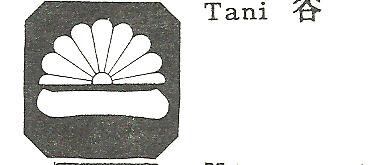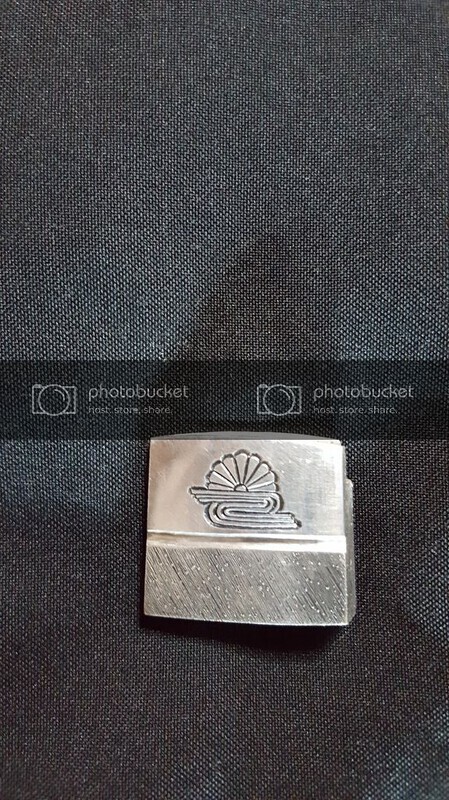-
Posts
13,067 -
Joined
-
Last visited
-
Days Won
157
Content Type
Profiles
Forums
Events
Store
Downloads
Gallery
Everything posted by Bruce Pennington
-
Thanks JP! It's just something I enjoy! Now .... to figure out how to get paid for it!!!! Ha! If I ever get enough together to qualify for a book, that's something that would be fun to look into. You, and half the guys here, will all get free copies for your contributions to our hobby. I just gather stuff that other guys have already posted. Speaking of already posted, found a discussion of the use of the emblem by the Kamikaze operation. There's likely more on this, please add if anyone has more, but here's stuff from A POST ON WARRELICS. A kamikaze headband worn by a factory worker (they apparently swapped headbands) found HERE
-
That's a real beauty, Steve! I assume you know the meaning of all the stamps, and the style tassel you'll want on it, right?
-
That’s a great transition Trystan, thanks! I’m guessing the detail on that store emblem isn’t going to be good enough to tell if it’s different than the Seki emblem or the same. To me, when I zoom, it seems to have a single circle, not the double one of Seki.
-
A thought on the 2-1-3 design - I had initially thought them to be crude and/or sloppy attempts at the kikusui, but the idea occurred to me that the top 2 lines are tight and the bottom 3 are wide giving the visual impression that the river is flowing toward the viewer, with the top farther away and the bottom nearer. Didn't expect to sit in on an art appreciation class, did you!
-
Quite possibly! But only if someone will translate for us! Help!
-
Maybe someone will chime in with their favorite cleaning compound to remove 80 yr old grease. If not, search the word "cosmoline" and you'll get a few pages where guys discussed its removal. All the metal parts show active rust, so I'd definitely use a rag and some oil (choices vary - sewing matching oil and choji oil are most mentioned. I just choji oil which is a mix specially made for Japanese blades of clove oil and mineral oil with a pleasant aroma mixed in). Another search for leather protection will reveal several products guys like.
-
Tōto-Jūnin Ikkansai Kunimori Kinsaku Struggling with the first part - is it "Resident of Tokyo"? Then "Ikkansai Kanimori carefully made this"? Thanks!
-
Steve, You didn't show us a picture of the other side. It's likely a date. If you post a pic, we can translate that. Someone should be able to give you a full translation of the mei side. If you don't get one soon, bring it to the TRANSLATION ASSISTANCE FORUM.
-
New development from our World Famous Researcher - Thomas (Kiipu) - on a possible relationship between the "岐" Gifu and the Seki Shoten Co "The maker is listed in Japanese documents as Seki Cutlery 関刃物 and used the character 岐 as a logo. However, there were two entities that started with those characters, Seki Cutlery Manufacturers Society 関刃物工業組合 and Seki Cutlery Company, Limited 関刃物株式會社. Unfortunately for collectors, it is not known which one was the manufacturer of these swords. Starting in the 82,000 range [speaking here about Type 95 NCO gunto], the company and logo changed to Seki Sword Company, Limited 関刀剣株式會社. This company was identified by means of a brochure that included the logo on the cover!" Discussion found HERE ON WARRELICS So, at least on Type 95's, the Gifu 岐 is the logo of the Seki Cutlery Co. which changed to . after the 82000 serial number. It is not known if the Gifu in sakura found on officer blades is of the same company, or if it is an Army inspector stamp, or even of the Seki Cutlery Manufacturers Society (which I think would be a likely organization inspecting blades). Thomas, please jump in and correct me if I have understood this incorrectly!
-
Your rust is orange which means active rust. I've seen two approaches, either oil it and leave it, stopping the advance of the rust; or use a deer antler (you can by these at pet shops) to scrape the active rust off. The antler won't damage the nakago nor will it remove worthwhile patina.
-

Late Type 95 help please
Bruce Pennington replied to Peter Bleed's topic in Military Swords of Japan
Peter, By "assess" do you mean estimate value? Showa22 is selling them from $650 to $1,400. Monkey is selling them for $2,800 (HA!). Somewhere in the middle of Showa's range is a fair price. I had a hard time selling mine at the height of the COVID slowdown for $900, but prices SEEM to be slowly rebounding.- 1 reply
-
- 1
-

-
Yes, George, I've seen a couple (here's one). I've also seen a discussion (no pictures unfortunately) of one for sale with a Seki stamp ON THIS THREAD.
-
How interesting! A 7-petal, like the fuchi mon, and my first 1-1-1 pattern, going the other way, no less!
-
That's a great example David! Racking my brains for another leather covered Rinji seishiki model, but I can't recall seeing one. No reason a guy wouldn't want to protect his RS saya, I just don't recall seeing it before. Very Cool! Is the blade star-stamped? If so, could I get a pic? Also any other stamps on it?
-

Attention Mantetsu Owners: A Survey
Bruce Pennington replied to Bruce Pennington's topic in Military Swords of Japan
I haven't been tracking it. It was a point of interest when we were trying to track down the rumor that Tokyo 1st Arsenal was making Koa Isshin blades, so the "To" showing up on the fittings of Koa blades was seeming to confirm the idea. We've since learned that SMR was tasked to furnish 6,000 Koa blades to Tokyo (in 1944; 500 finished, 5,500 unfinished). The "M" was also thought to be originating out of Tokyo. And these "TO" stamped kabutogane on Koa blades seemed to back that up. Today, I'm not so sure the stamp's source was Tokyo as we now have Nan and Ren stamped blades with the "M". The Nan-Man Arsenal assumed supervisory duty over the SMR production in 1942, so I suspect it was their inspectors using the "M" on partially completed blades. The fact that your 1943 non-Koa blade is in fittings with a possible "TO" stamp doesn't surprise me as the majority of blades made by SMR were shipped to Tokyo for fitting and sales. We were still intrigued by the number of Mantetsu blades showing up in fittings with the stamp and wondered if it would eventually lead us to revelations about just who was outfitting these blades. -
Could we get a picture of the blade tip, close up. Also a picture of the bare tang without the hand guard and spacers.
-

no more swords via eBay GSP??
Bruce Pennington replied to saipan59's topic in Auctions and Online Sales or Sellers
I've only tried using it once. The sword got to a shipping point in L.A., and then they returned it to me saying that the shipper (DHL) wouldn't take blades. It was just going from Colorado to Canada, and I know for a fact that DHL is used by guys all over the world. So I think it was GSP anti-weapons lunies and they tried to blame DHL. Won't ever use it again. -
A Kikusui on a fuchi (note only 7 petals) Kikusui-themed menuki Of course Kikusui are found on things other than swords: A yari case (style 2 slanted) Kikusui-themed tsuba A Mini-submarine A shirasaya
-
After doing some research into Kikusui on gunto, I've discovered some interesting tid-bits, which may not be news to some of us, but I'll post what I've found. If anyone sees something I've missed or has something to add, please do! According Dan King, “A Tomb Called Iwo Jima,” the crest we know today as the Kikusui was the clan crest of a 14th Century Samurai, Kusunoki-Masa-sige , who fought to the death proclaiming “But that I had seven lives to give to the Emperor!” (at least the saying is attributed to him). “The Japanese military used … the crest … as a symbol of devotion and self-sacrifice. The Navy adopted Minatogawa Jinja as their sacred shrine.” Crests are found on blades, nakago, and habaki. Stylized Kikusui are found on tsuba, menuki, and mon. They are hand-crafted, not stamped. Most come with a 9-petal chrysanthemum (one mon found with 7 petals) sitting atop an S-shaped flowing river. The rivers mostly fall into 3 styles. Style 1: Three Parallel lines : The sample group is small, but all observed of this version are squared at the ends Style 2: 3-2-3 Ends slanted Ends Squared This version is created two ways: 2 parallel lines with the third added at the top and bottom ; Or: 2 parallel lines with the third added in the bends of the river. Style 3: 2-1-2 Two parallel lines merge to one in the center and emerge as 2 at the bottom. The third line is simulated by adding curves at each bend. Style 4: 2-1-3 Two parallel lines merge to one in the middle, coming out as three at the bottom
-
It’s an old practice, from way back. I have never read an explanation on who started it or why. Around here, though, the man who asked the question gets assigned the research! Let us know what you find out! Ha! Edit: After re-reading your post, I realize I misunderstood your question. I remember it being discussed years ago, and while no one knew, the predominant theory was the same as yours. It would take some research into blades made by smiths who used kao to see if non-traditionally made blades got the kao or not.
-

newly found Minatogawa Jinja katana
Bruce Pennington replied to baldi1942's topic in General Nihonto Related Discussion
-

Small dark mark on tanto, kezu it just rust? Something else?
Bruce Pennington replied to terminus's topic in Nihonto
-
-

newly found Minatogawa Jinja katana
Bruce Pennington replied to baldi1942's topic in General Nihonto Related Discussion
Neil, My post was a "2-cents" value and in no way meant to question your unquestionable experience with koshirae or anything else. I do tend to play Devil's Advocate, though, when someone starts leaning toward an "always" or "never"! Ha! So, you challenged me to dig deeper on the kikusui. I'm only half-way through the NMB database, but just came across this one. It's much better made than this one of this post, but closed ends. That MAY be due to the way it was imprinted or sculpted, though. On a Yoshichika, found ON THIS THREAD. -

Why are Mon so rare on Kai Gunto?
Bruce Pennington replied to PNSSHOGUN's topic in Military Swords of Japan
Did a little search on Gunboards and found several bayonets with stamps on the ricasso, and they are all from arsenals! The Jinsen is in sakura like this Toyokawa. SO, I guess it really is a stamp from the Toyokawa aresenal. Seems they used different stamps (circle or sakura) depending upon the item it was going on.





.jpg.3a173f9f826aab11004a2345a0b95c58.jpg)
